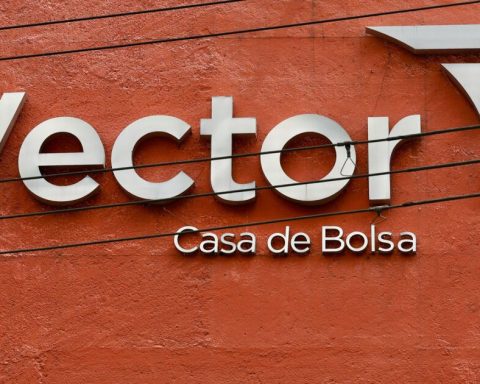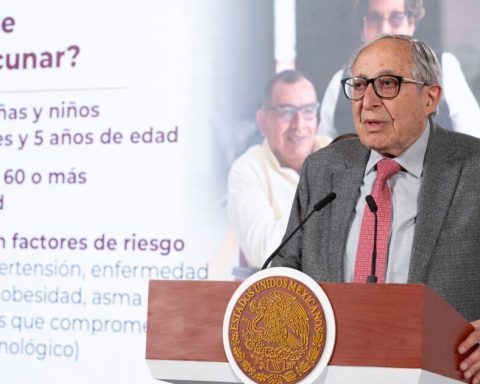The central bank digital currencies are digital versions of fiat money issued and regulated by central banks. They are also known by the acronym CBDC, from Central Bank Digital Currency. As such, they are more secure and inherently non-volatile, unlike cryptocurrencies, digital assets that seem to live on a roller coaster.
Cryptocurrency enthusiasts don’t like that definition of International Monetary Fund (IMF) that places the currencies of the central banks as something safe, because that depends, they say, on who wants to be protected and in what circumstances. These doubts are based on fears about individual guarantees, typical of an ideology contrary to government control and State intervention.
One of them is Samson MowCEO of the company JAN3, who sees great risks with the incorporation of CBDCs. Mow and JAN3 advised President Nayib Bukele in El Salvador on the adoption of Bitcoin as legal tender and is currently doing so on the design of “Volcano Bonds”. Mow talked to The Economist.
“Inclusion in exchange for greater control”
One of the benefits that CBDCs could bring is the increase in digital payments, more agile and secure than fiat. Central banks around the world already have projects under development, or are studying one. He Bank of Mexico hopes to implement theirs in 2025.
Currently more than 100 digital currency projects are in development. Nigeria and the Bahamas have theirs in operation. The eNaira and the Sand Dollar have helped in those countries to improve the conditions of financial inclusion for the population.
But Samson Mow remains skeptical about the potential benefits of CBDCs, which he believes offer no advantage over current digital money. Instead, he cautions, they’re just another version of fiat money, but with drawbacks.
“CBDCs are no different than money today, but they do offer central banks more direct control over the money supply.” With them, he said, there are risks that money becomes “a political tool to reward or punish.”
It should be noted that one of the arguments that cryptocurrency enthusiasts often use in favor of Bitcoin it is the independence it gives its users. Since it is not issued by a regulatory body, it is practically impossible for someone to control it.
“If a central bank decided to freeze your money, effectively there is nothing you can do anymore. You may have freedom of expression, but that right doesn’t matter if you can’t pay the tube to go to a rally to protest and exercise that freedom,” Mow said.
Missing a counterweight
The cryptocurrency market has expanded and there are currently thousands of different projects. For Samson Mow, the first classification is occupied by Bitcoin, followed by other cryptocurrencies and a third type is made up of stablecoins or “anchored currencies”.
Stablecoins are a type of cryptocurrency whose value is backed by traditional monetary instruments, such as legal tender coins stored by the issuing entity. The first and most famous is Tetherbacked in dollars.
“Central bank digital currencies they are like stablecoins, but issued by a central bank, and come with all kinds of conditions. But Bitcoin is immutable, permissionless, totally apolitical and works like bearer money,” he stated.
And instead, he added, with greater visibility of CBDCs comes the temptation to “shape” user behavior. Depending on the political causes of the moment, it opens the door to reward (print) or punish (freeze or confiscate) depending on them.
In his questions, Mow raises serious questions about the viability of CBDCs in the face of an inability to limit the power of the issuing entity. “Few people fully understand how important money is and that it goes hand in hand with freedom.”
It is not a matter of ideology
On the possibility that the rejection of CBDCs by Bitcoin enthusiasts comes only from an ideological issue, the CEO of JAN3 considered that the issue goes beyond the different ways of thinking that come from the human experience.
“Some societies have benefited disproportionately from the money press, from the ideologies that give you the moral authority to print money. The more wealth is stored in your coin, the more you can print. But the consequences come.
“If there was a little machine that could buy you everything you wanted, but hurt others a little, would you use it? How much? Should money be a tool of the State? Should central banks have full visibility into your spending habits?
“Ultimately, it is about freedom from repression,” said Mow, who collaborates with El Salvador in the design of the strategy for the construction of the new Bitcoin City, among other development projects financed with alternative sources to credit.
Samson Mow is a Bitcoin entrepreneur of Chinese-Canadian descent. He is the founder of several companies, including JAN3, whose name refers to January 3, 2009, when Bitcoin founder Satoshi Nakamoto mined the first block.











